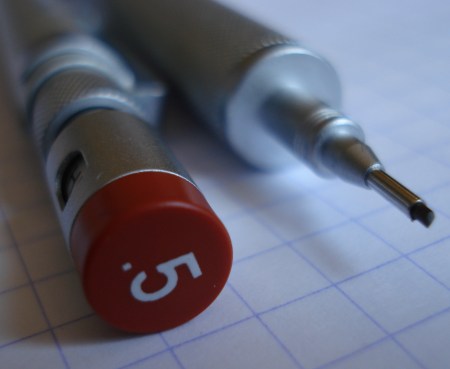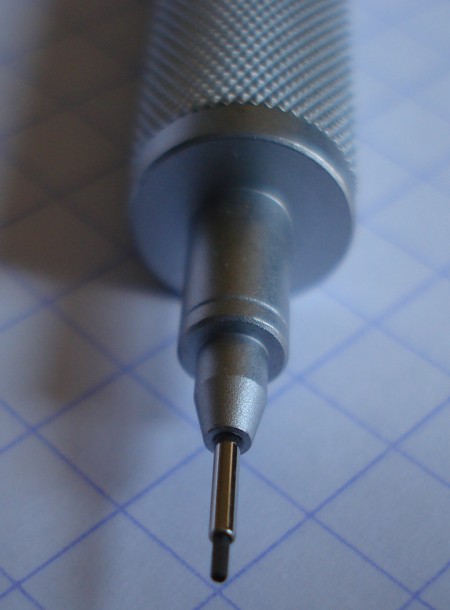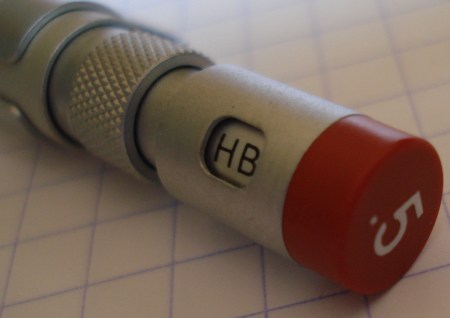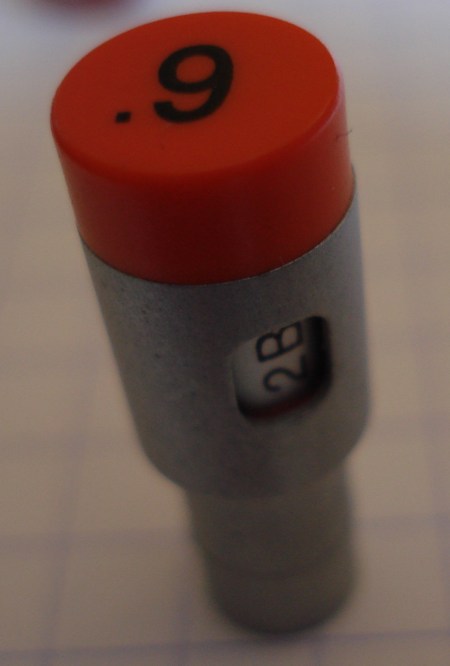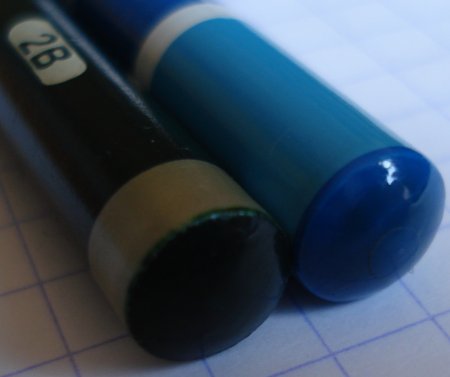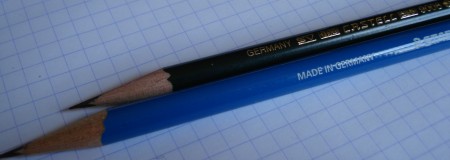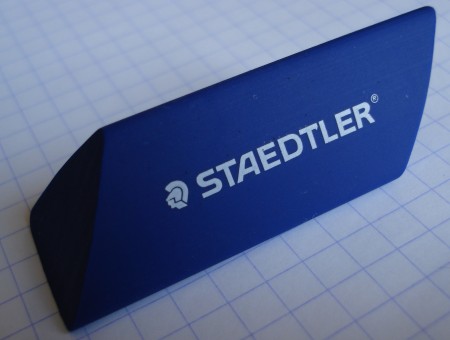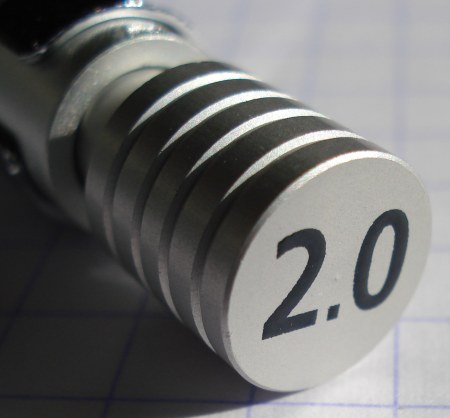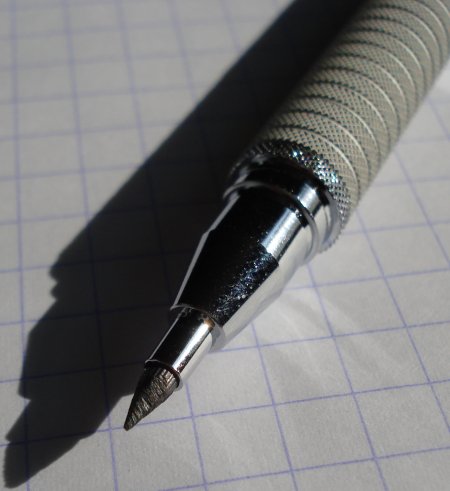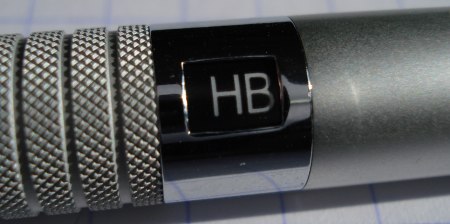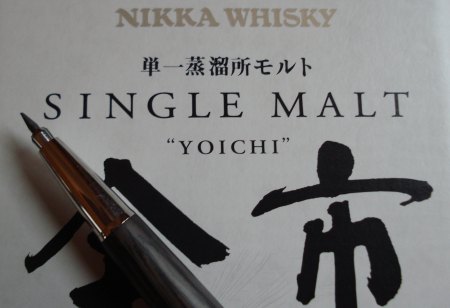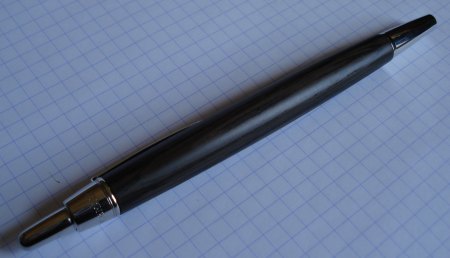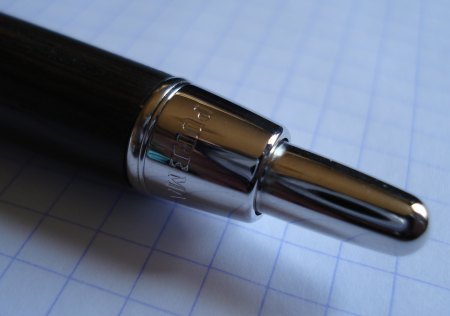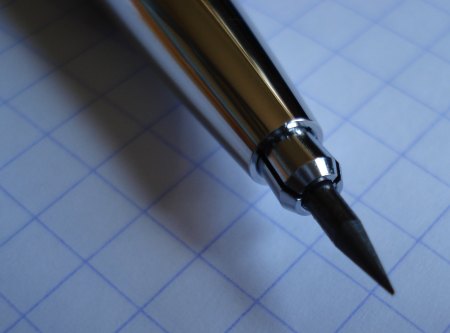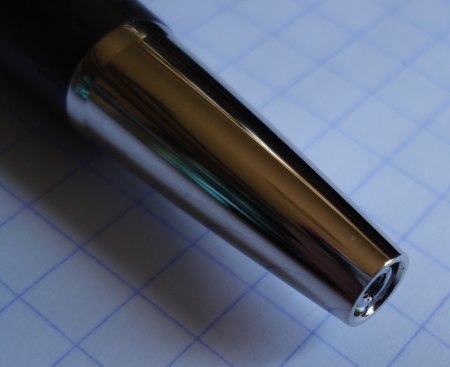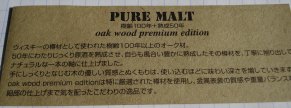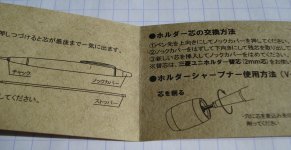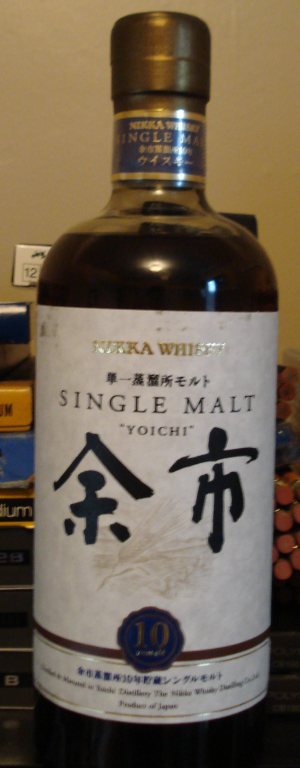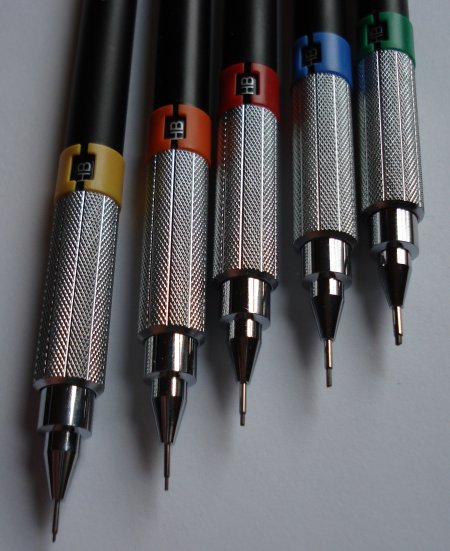
The Mitsubishi Uni M-552 is another inexpensive drafting pencil.
Lightweight at about 12.5g, they come in five lead diameters. I bought all five. I may soon regret this, as the 0.4mm pencil does not have refills available in Canada. On the other hand, it’s not too often that I’ve found myself saying that I need a 0.4mm pencil for a particular purpose.
The tip, grip, clip, and cap are metal, and the barrel is plastic.
The lead advances by clicking the cap. A thin plastic ring, the pencil’s only colourful element, is the pencil’s lead grade window.
The grip, very lightweight, screws off of the plastic barrel (see photo). Why a removable grip? I’m not sure, but if the idea was to make available a choice of grips to suit individual preferences, that would have been an excellent offering.
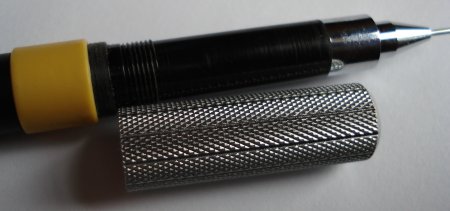
The grip superficially resembles that of some expensive drafting pencils – which is probably the intent. But it doesn’t at all have the smooth feel of the Staedtler 925 95, for example. In fact, I found the 552 quite unpleasant.
It seemed to be a pencil that had a lot of attention paid to the cosmetics. Unfortunately, the looks don’t achieve much in person, and I would rate it lower than the A120 – though there is a 0.4mm version, if that is important to you.

